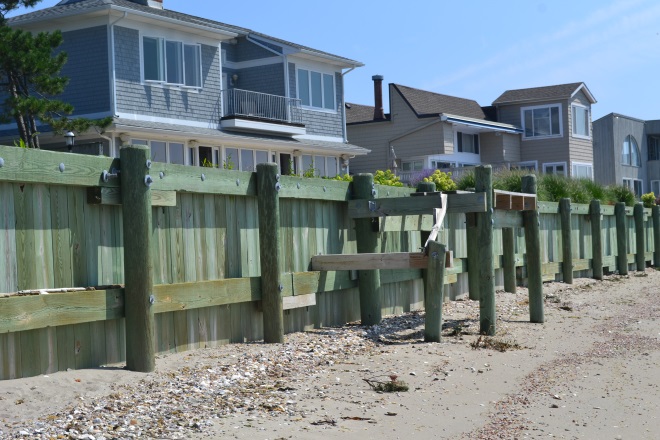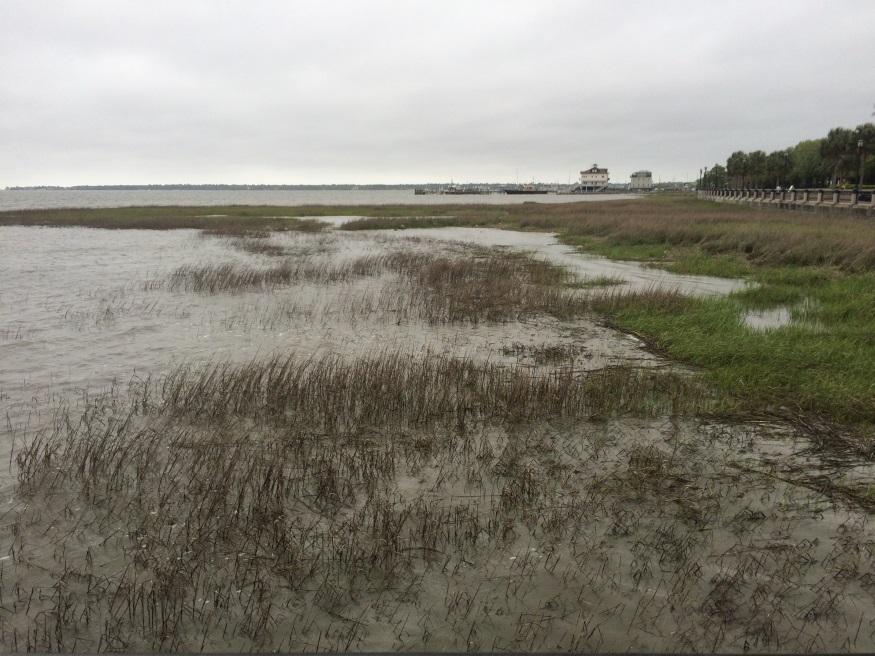Jetties
Although
groins and jetties may be constructed of similar materials and are frequently
confused, they perform different functions. Jetties are designed to maintain
the position of inlets and prevent sand from filling navigation channels. |
|
Seawalls
Seawalls
are shore parallel structures, designed to protect upland property from coastal
erosion and flooding caused by wave action and storm surge. Seawalls are
typically constructed of concrete of steel sheet piling.
|
 |
|
 |
Bulkheads
Bulkheads
are vertical, shore parallel structures, designed to retain upland sediment.
Constructed of concrete, timber or steel sheet piling or vinyl composite, they
are typically used in low wave energy environments.
|
|
Revetments
|
A
revetment is a sloping, shore parallel structure of rock, or concrete units or
slabs, designed built to protect a scarp or bluff against erosion by wave
action, storm surge and currents. Revetment may also be used to provide
additional protection at the toe of seawalls. |
Breakwaters
Breakwaters
are designed to reduce wave action at the shore. Breakwaters may be connected to the shoreline or detached from it.
Several options are available for addressing erosion along currently
defended shorelines. The most appropriate method will depend on site specific
conditions. There are many parameters to
consider before selecting a Living Shoreline approach. Some questions to ask are:
1.
What is the
existing engineered structure at the site?
Coastal engineering
structures are designed to perform different functions to provide protection
from wave action and storm surge. For instance, groins are designed to
interrupt alongshore transport of sand away from the site, creating or
maintaining a beach to mitigate wave action. Alternatively, a seawall is a
physical barrier to wave action.
2.
Is the existing
structure functional or easily repaired? Is the existing structure performing
the protective function for which it was designed? Is a different form of
protection needed now?
If the existing
structure is serviceable and performing the protective function which is needed
at the site, no action may be the most suitable approach. Even if the existing
structure is function, adding a hybrid Living Shoreline could enhance the
ecosystem services at the project site.
3.
Is the project site
experiencing erosion?
Do nothing may be
the most suitable approach if the site is experiencing little to no erosion,
The engineered structure may no longer be functioning as designed or the site
conditions could have changed since completion of the structure.
4.
If you have a
seawall or revetment, is there evidence that it is regularly overtopped and
overwashed by waves, and/or that flooding occurs landward of the structure’s
crest?
Seawalls, bulkheads
and revetments that are regularly overtopped are susceptible to scouring
landward of the structure, and to potential failure.
5.
Is the structure
damaged on a regular basis? Is it being flanked (erosion around the ends of the
structure)?
It is critical to address
existing and potential damage to the structure before it leads to failure of
the structure and potential damage to existing landward buildings and
infrastructure. A Living Shoreline may provide sufficient protection to reduce
potential damage to the existing coastal structure.
6.
Does the existing
coastal structure provide sufficient protection?
A Living Shoreline
may increase the protection provided by the existing structure.
7.
Is shoreline usage
changing?
Changes to
shoreline usage may warrant a change to the existing protection. For example, a
seawall may not be compatible with swimming, sunbathing or small boat access.
8.
Are changes being
made to neighboring shoreline protection?
Changes made on
adjacent or nearby properties may affect the coastal processes at the project
site. This needs to be considered when evaluating existing or future coastal
protection requirements.
For a printable check list, click here
| Little
information is available in the literature on removing and replacing
traditional coastal engineering structures with Living Shoreline approaches,
and even less information exists on the best approach to enhance
the ecosystem services of hardened structures. Since a large proportion of the
Connecticut shoreline is already armored with traditional coastal protection
structures, it is critically important to determine through research and
experience the best methods of improving coastal habitats in the presence of
hardened structures. This photograph shows a healthy marsh that was planted in
front of an existing seawall. The marsh mitigates the wave heights at the wall.
If the existing coastal structure is functional or easily
repaired, the best approach is to consider alternatives for the future
replacement, or techniques to enhance the shoreline habitat. With the current
state of knowledge, some options to consider are:
- Replacing
impervious surface landward of your structure, with salt-tolerant plants
- Roughening
the surface of your seawall or adding tidal pools to enhance the shoreline
habitat
- Placing
rubble mound rock at the base of your seawall to reduce wave energy
- Using
environmentally friendly concrete
- Planting
dune grass on dry beach to increase sand trapping
|
 |
Back to top


